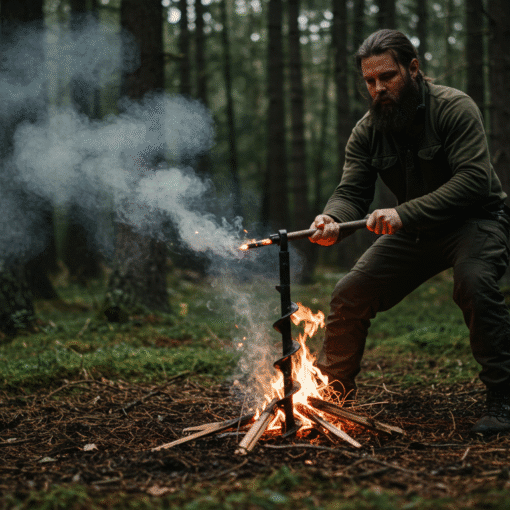Please Note: This post may contain affiliate links. If you click one of them, we may receive a commission at no extra cost to you. As an Amazon Associate, I earn from qualifying purchases.
Top Takeaways and Key Concepts
- Learn basic first aid skills to handle common outdoor injuries and emergencies confidently.
- Pack a complete first aid kit with bandages, gauze, pain relievers, and antiseptic wipes.
- Treat common injuries quickly using simple methods like R.I.C.E. for sprains and wound cleaning.
- Know CPR essentials to respond fast if someone stops breathing in a remote area.
- Seek professional help when needed and recognize serious injury warning signs like deformities or swelling.
Summary of This Article
This article explains why wilderness first aid is essential for anyone exploring the outdoors, where help isn’t always available. It emphasizes learning basic safety skills, packing a smart first aid kit, and handling common injuries like cuts, sprains, and insect bites. It introduces CPR basics for emergencies and encourages staying calm, prepared, and knowing when to call professionals. With the right knowledge and preparation, outdoor adventures become safer, more confident, and far more enjoyable.
Short Video Version of this Article
So, you’re going on a crazy journey! That’s great! Just think about how nice it would be to smell pine trees and hear birds singing. You might see a deer. And the peace and quiet! Other than the small panic that sets in when you discover you can’t get cell service.
Wait a minute before you take those bags and run. We need to talk about something really useful, but not as pleasant as campfire music or s’mores. Yes, it is wilderness first aid.
I know it seems monotonous, but believe me, it’s quite helpful. Mother Nature likes to keep us on our toes. You might trip over a root or get bitten by an insect. It makes a great difference to know what to do.
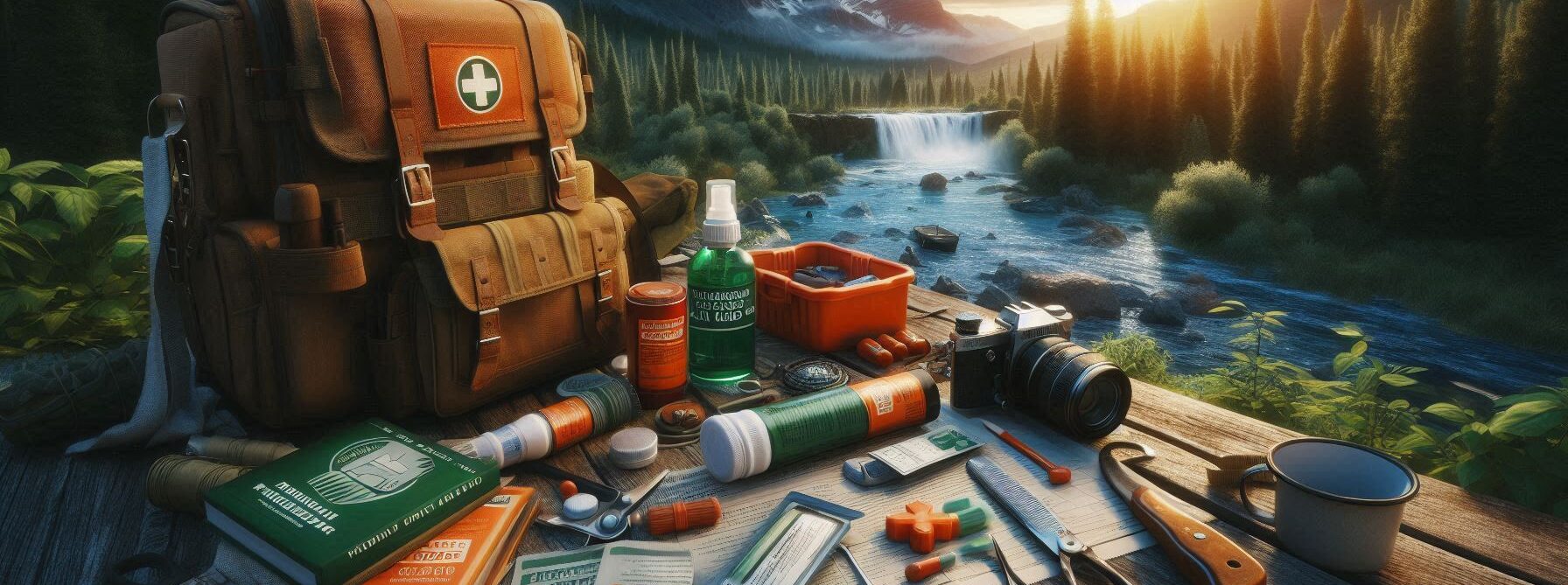
You can feel ready with just a few fundamentals. You can fit a small first-aid kit in your bag. It doesn’t have to be fancy. Band-aids, sterile wipes, and some allergy medicines can save your life.
Imagine this: you’re camping and someone gets a cut. You’ll feel like a superhero if you know how to help. Being ready is the key. You don’t have to worry about your travel.
So, spend some time learning these skills. It makes your trip much more fun. Also, it demonstrates that you care for your pals! Have fun in the wild, my friend! Have fun exploring!
Why Wilderness First Aid Matters
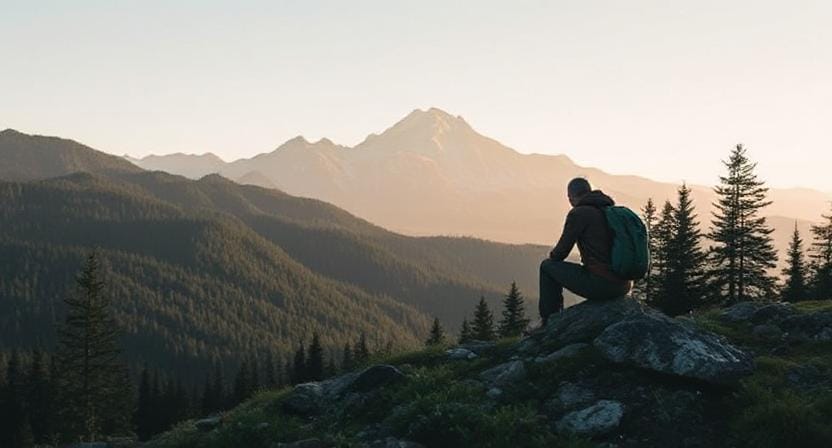
Have you ever gone trekking with a hurt ankle? It’s like attempting to run a marathon with clown shoes. Not the best.
That’s why it’s important to know how to do first aid in the woods, not just for yourself but also for your camping friends who may or may not think they’re invincible (and will probably try to do a backflip off a rock at some point).
Help isn’t simply a phone call away while you’re in the wild. When you’re far away from the local hospital, understanding how to treat a scrape or a bump can make a big difference. Imagine this: a person climbs a tree to take a cool selfie to show off to their pals, but then—oops! You’ve got a problem now.
No one wants to have to go to urgent care while camping. It’s a lot better to deal with things like a pro.
It feels good to be ready. Picture yourself sitting around the campfire with your buddies and telling them how you dealt with a bee sting. People will think you’re a wizard. It’s not just about looking cool. You’ll also have a lot of bragging rights. And you could even get out of doing the dishes for the night!
Just give it some thought. You feel strong and ready when you know what to do. It’s like having a special power. So, spend some time learning some basic first aid. It keeps everyone safe and makes your trip more entertaining. Have fun camping!
Essential Gear: What Should Be in Your First Aid Kit?
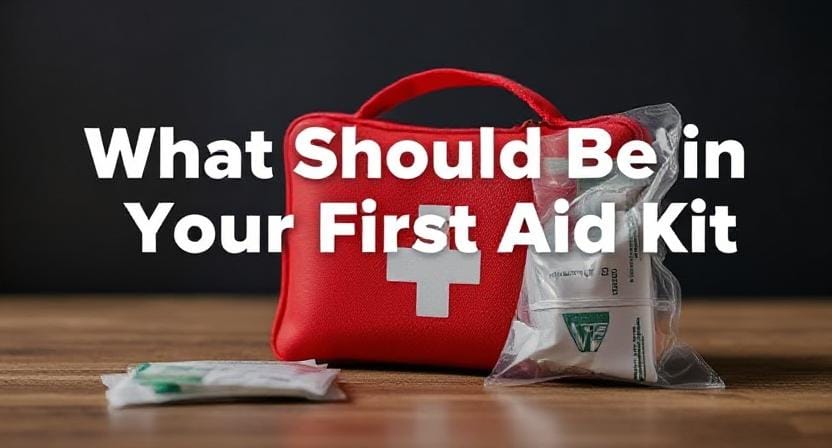
Putting together your wilderness first aid pack should seem like getting ready for a big adventure, with shiny band-aids and strange ointments that sound like spells from Harry Potter (I’m looking at you, antiseptic cream). But what do you truly need? Let’s take it apart.
First, let’s talk about adhesive bandages. These are important for everything from blisters from new hiking boots (which I strongly suggest breaking in before going on the trails) to little cuts from falling dramatically on uneven ground. We all know that our coordination abilities can occasionally be as bad as those of a newborn giraffe.
Now let’s talk about medical tape and gauze pads. They’re great for wrapping up those major owies. Just imagine this: you’re having a fantastic time and then someone trips over a root. Oh no! If you have to reach for the gauze more than once on your vacation, it might be time to stay away from paths that appear like they belong in a horror movie!
And don’t forget the painkillers. Ibuprofen or acetaminophen can save your life. Believe me, someone will always say their muscles hurt after the first large hike. And what about sleeping on rocks? Not really a mattress for sleeping, is it?
Now, let’s talk about insect repellant and sunscreen. You really need these two things. You don’t want to come home looking like a red lobster or with so many mosquito bites that you feel like you have chickenpox again. You want to enjoy those beautiful summer nights over the campfire, not scratch like crazy!
A little planning can go a long way. Prepare those goods, and you’ll be ready for an adventure. It’s all about making happy memories, not ones that make you itch!
Common Injuries: How to Handle Them Like a Pro
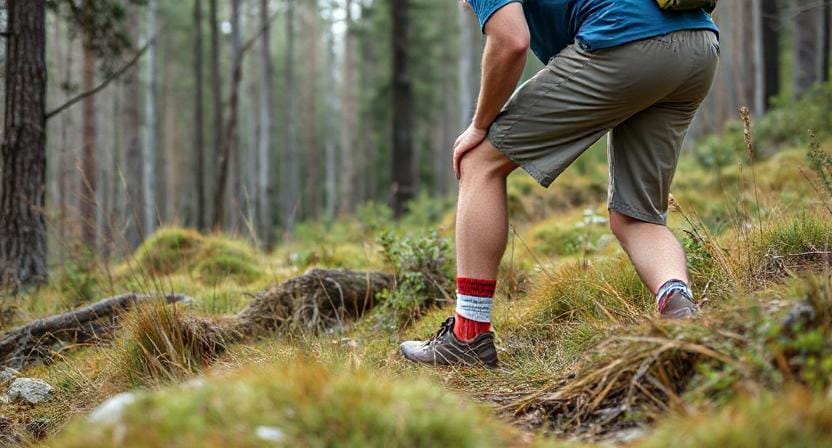
What could possibly go wrong while enjoying nature? Oh right—everything! From twisted ankles on rocky paths (thanks again, uneven terrain) to allergic reactions from unexpected encounters with plants whose names sound suspiciously similar to “poison ivy,” it’s vital we know how to address these common injuries.
If someone twists their ankle while trying impressively yet unsuccessfully attempting parkour over fallen logs (don’t worry; this has happened more times than I can count), remember R.I.C.E.: Rest, Ice, Compression, Elevation.
It sounds fancy but essentially means letting them sit down while you wrap their foot in ice packs made from frozen peas because who doesn’t love multi-tasking?
For scrapes and cuts that need a bit more than a band-aid, just rinse them gently with water first. Then, you can put on some antiseptic ointment and cover it with gauze. If things get really messy, it’s time for your outdoor triage skills to kick in. You might get a bit creative, but that can be part of the fun, right?
And then there are those pesky insect bites. Ugh! They can make you scratch like a dog chasing squirrels. Start by applying a cool compress to help soothe the area. If it doesn’t get better, well, congrats! You’ve officially become one with nature.
It’s all about rolling with the punches, and sometimes that means dealing with a few bumps along the way. Just remember, every little “oops” moment can turn into a great story later on! Isn’t that what adventures are all about?
CPR Basics: Saving Lives Like A Hero
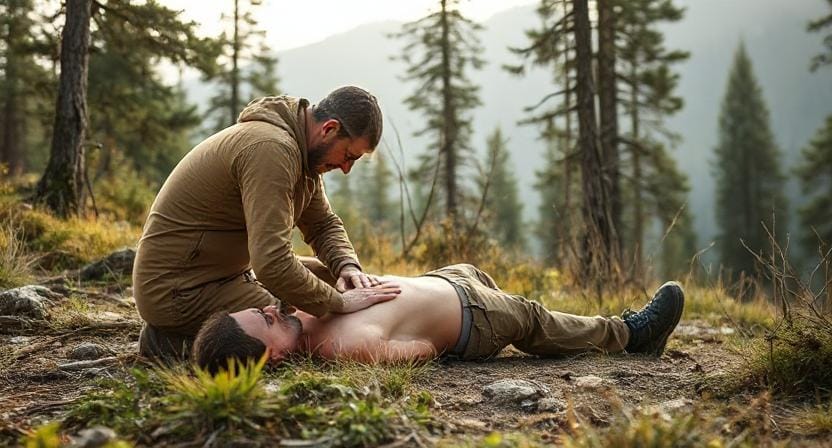
Knowing basic CPR is another important skill every adventurer should possess—even if most people only think about performing mouth-to-mouth resuscitation during awkward beach games gone wrong!
When dealing with someone who has stopped breathing due primarily due unforeseen circumstances such as slipping off rocks near waterfalls (which happens more often than I’d like), check responsiveness first before calling emergency services—or running away screaming—which seems equally tempting depending upon personal preferences regarding panic levels!
If someone is unresponsive, you need to act fast. Start chest compressions right away. It’s 30 compressions followed by two rescue breaths. Keep going until help arrives or, you know, they magically wake up because they’re just too stubborn to stay down.
The goal isn’t about getting a medal for best rescuer. It’s all about keeping your friends alive long enough to share those funny, embarrassing stories later while sitting around the campfire. Imagine the laughs!
Every little moment adds to the adventure. So stay calm and do what you can. You got this!
When To Seek Professional Help
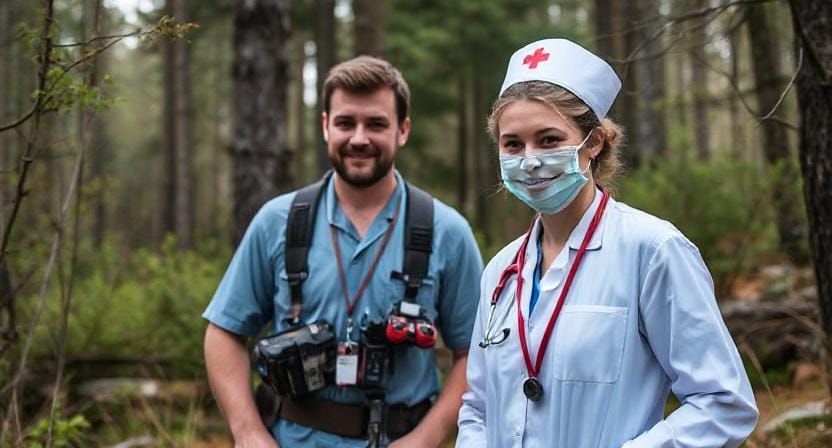
Sometimes our DIY wilderness medicine attempts won’t suffice—and that’s perfectly okay! If injuries worsen despite best efforts or signs indicate severe conditions such as broken bones accompanied by visible deformities…it may be time seek actual professionals rather than relying solely upon neighbor Fred’s questionable advice acquired through years binge-watching survival shows online.
Watch out for signs like swelling or bruising, especially after a big fall. You know, like when you’re trying to catch a glimpse of that cute deer and suddenly you’re tumbling down some rocks. We’ve all had a moment like that, right?
It can feel a bit scary knowing what to do in emergencies. But being ready can really make a difference. You can help your friends feel safe and happy, and that means more fun camping trips in the future. No one wants to be worried about a big accident when they’re just trying to roast marshmallows and laugh together.
Keeping spirits high is key. If everyone knows you’ve got their back, there’s just a lot less fear. And who doesn’t want more laughter around the campfire? So, stay aware, and trust your instincts.
Conclusion: Adventure Awaits With Preparedness
This guide is full of useful information for dealing with the unexpected things that could happen on the route. The gorgeous scenery can be really distracting, right? You were just enjoying the vista when you tripped on a rock.
Being ready makes all the difference. You’ll feel more sure of yourself when you leave. You’re ready for everything, from scrapes and bumps to bigger surprises. You’ll deal with whatever that comes your way and still have time to laugh about it.
It’s about keeping the fun going! Imagine gathering around the campfire, telling funny stories about minor things that went wrong, with everyone laughing. Right? Little things can turn into the nicest memories.
So, have fun on your next big trip! You can do this! Don’t forget to have fun and keep your eyes open.
Wilderness first aid is essential for anyone exploring remote areas where medical help isn’t always available. By learning basic emergency skills, packing the right first aid supplies, and staying calm under pressure, you can confidently handle injuries like cuts, sprains, bites, and even breathing emergencies while keeping outdoor adventures safe and enjoyable.
Frequently Asked Questions
What is wilderness first aid and why is it important?
Wilderness first aid is emergency care given in remote outdoor settings where medical help is delayed. It is important because it teaches essential skills to manage injuries, stabilize someone, and prevent conditions from getting worse until professional help arrives.
What should a basic wilderness first aid kit include?
A good first aid kit should include adhesive bandages, gauze pads, medical tape, antiseptic wipes, pain relievers, tweezers, insect sting treatment, allergy medicine, and emergency gloves.
How do I treat a sprained ankle while hiking?
Use the R.I.C.E. method: Rest the foot, apply Ice, use Compression with a wrap, and Elevate the injury to reduce swelling and pain.
How do I treat cuts and scrapes outdoors?
Clean the wound gently with water, apply antiseptic to prevent infection, and cover it with sterile gauze or a bandage to protect it from dirt and bacteria.
What should I do for insect bites or stings?
Apply a cold compress to reduce swelling and itching. Use antihistamine or sting relief cream if needed, and monitor for signs of allergic reaction like swelling or breathing difficulty.
When should CPR be used in the wilderness?
CPR should be used immediately if a person is unresponsive and not breathing. Begin chest compressions and rescue breaths while someone calls for emergency help.
When is it necessary to seek professional medical help?
Seek help for severe injuries such as heavy bleeding, broken bones, head or spine injuries, allergic reactions, or if symptoms worsen despite first aid treatment.
Suggested Resources:
Wilderness First Aid Training
https://www.redcross.org/take-a-class/wilderness-first-aid
Basic Wilderness Survival Skills
https://www.wildlife.ca.gov/Conservation/Wildlife-Safety/Wilderness-Survival
The Ultimate Guide to Outdoor Safety
https://www.outdoorlife.com/safety/ultimate-guide-outdoor-safety/

Kevin Collier is a seasoned outdoor enthusiast and writer for Trekbug.com, specializing in outdoor adventures, survival strategies, and prepping insights. With a deep love for nature and a commitment to self-sufficiency, Kevin empowers readers to embrace the wilderness confidently. He shares valuable tips, practical techniques, and inspiring stories, helping both novice and experienced adventurers develop essential skills for surviving and thriving in the great outdoors.




